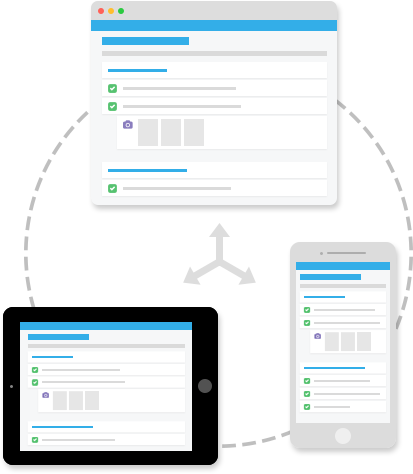Managing Change Checklist
Change is happening in your business. Each day, new initiatives and projects are started to improve performance, increase profits, and enhance your competitive advantage. You could be implementing technology to enable your workforce, changing a process to ensure compliance or pursuing an business wide transformation around your customers experience.
Is it happening unchecked? Use the following checklist to guide your business down the path for a successful change.
How often should this be used?
Ad hoc as required.
Library
Categories
Managing Change
Change Planning
Develop a plan
Create a clear and powerful case for your change, identifying why the status quo is no longer appropriate
Assess the ‘readiness for change’: identified the forces supporting change such as sponsorship, prior experience of change, culture of continuous improvement
Consider the ethics involved with the change process and identified appropriate guiding principles for the change process
Plan to provide an opportunity for a suitable ‘ending’ to the old process?
Complete an analysis of all the stakeholders in the change process and identify appropriate management strategies to address their needs and concerns
Identify any indirect impacts of the change eg to IT systems, facilities and accommodation, budgets, timing of other programs and services, start dates for changes and new staff, and respond with appropriate plans to address these impacts
Identify the type and nature of the communication and consultation process you will undertake – consider the outcomes you seek to achieve through the change as this will inform decisions about consultation.
For example, do you want input on the decision itself; do you want to consult on the implementation process; do you want to keep stakeholders informed of progress but don’t need their input?
Plan appropriate learning and development activities to support the change process
Change Implementation
Keep staff informed of the vision for the change, the status and progress of the change process and where they can get more information and support
Identify, inform and engage all the appropriate parties you need to collaborate with in order to implement the change and all the stakeholders impacted by the change
‘Close the feedback loop’: responding to staff input, providing an explanation of what suggestions will be acted on and why some actions can’t be taken (this will help manage expectations of the change outcomes and process)
Help staff keep perspective of what is ‘business as usual’ which can provide a base of the known and familiar whilst other things change
Provide timely and accurate feedback on the implementation process
Ensure problem solving processes are responsive to issues they raise
Be responsive to the feedback and keeping stakeholders up to date with progress and how their feedback is being used
Helping staff implementing the change
Communicate regularly and use a variety of communication methods
Support the change by providing additional resources if required, reallocating or reprioritising work and resources and removing barriers to ensure staff implementing the change project can give it priority and keep workloads are manageable
Keep your plans flexible so that you can manage unforeseen events
Ensure staff have the appropriate skills to implement the change? Is training taking place in a timely way
Are staff able to practice their new skills?
Support and manage individual responses to change
Promote progress and communicate how the change is making a difference
Celebrate the successes in the project, including rewarding excellent performance, team rewards or team celebrations as appropriate
Manage the team’s motivation, managing stress levels for yourself and supporting your team to manage their stress levels
Ensure your communication processes working effectively. Do you need to fine tune any change management process?
Are you effectively managing resistance? Could you be doing anything differently?
Change Consolidation
Have you set new team and individual goals and performance measures to suit the new conditions?
Do policies and procedures now reflect the change?
Are you now reinforcing and rewarding behaviours and attitudes that support the new process?
Do other systems and processes also reinforce the change?
Change Evaluation
Complete a change evaluation with input from stakeholders?
Document what you have learnt about change management and how can you see this being used in the future
Ensure you have communicated the change outcomes to stakeholders




